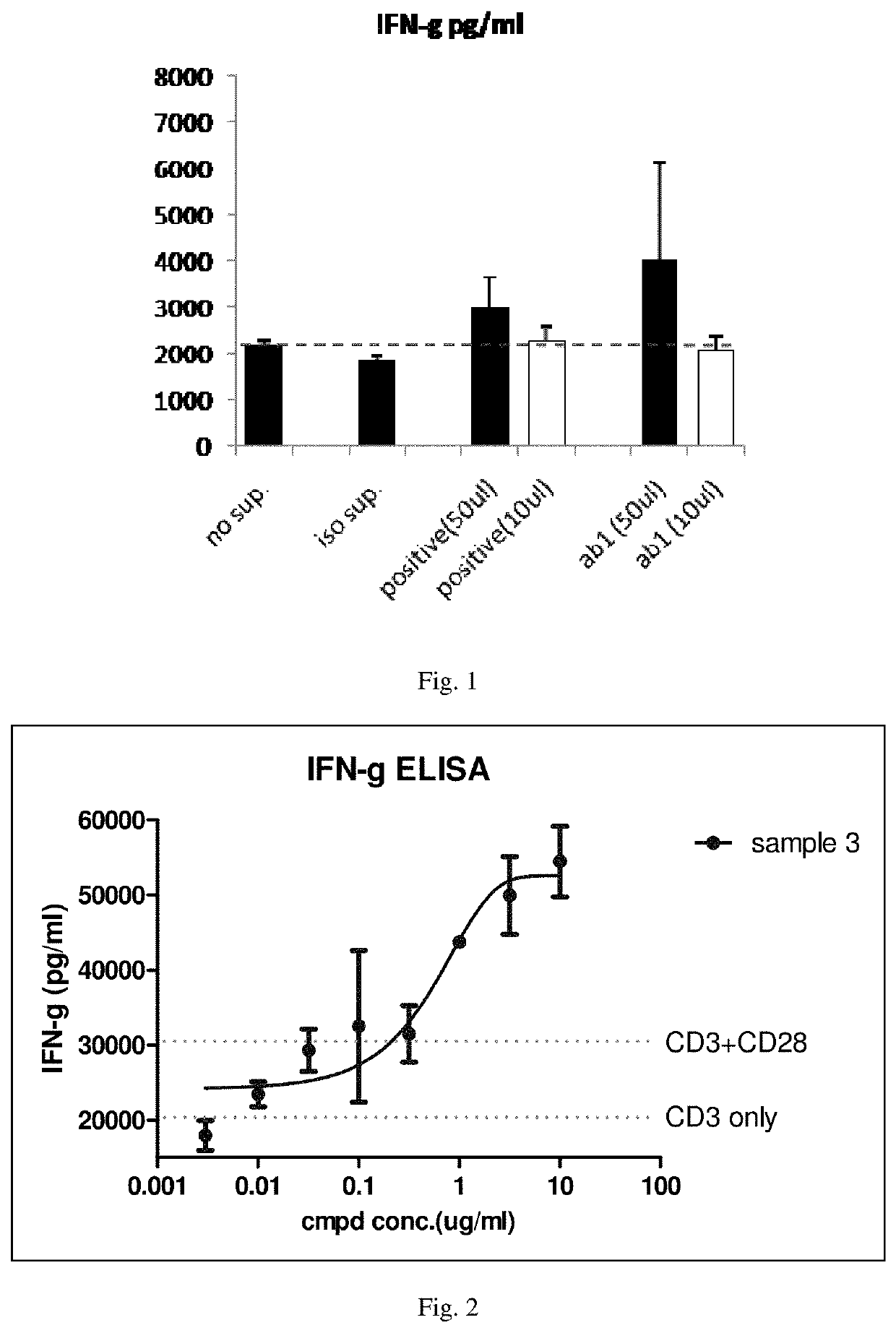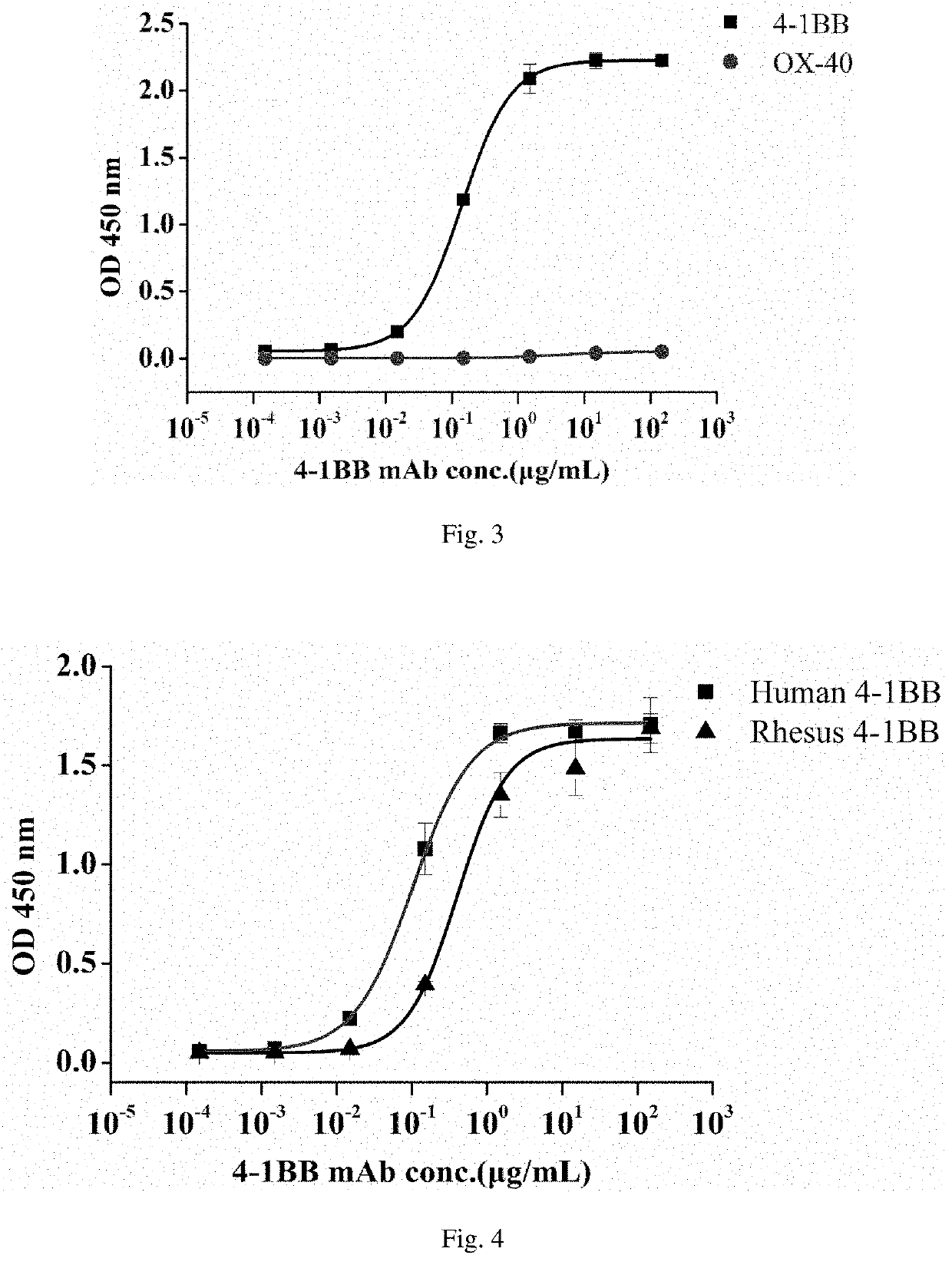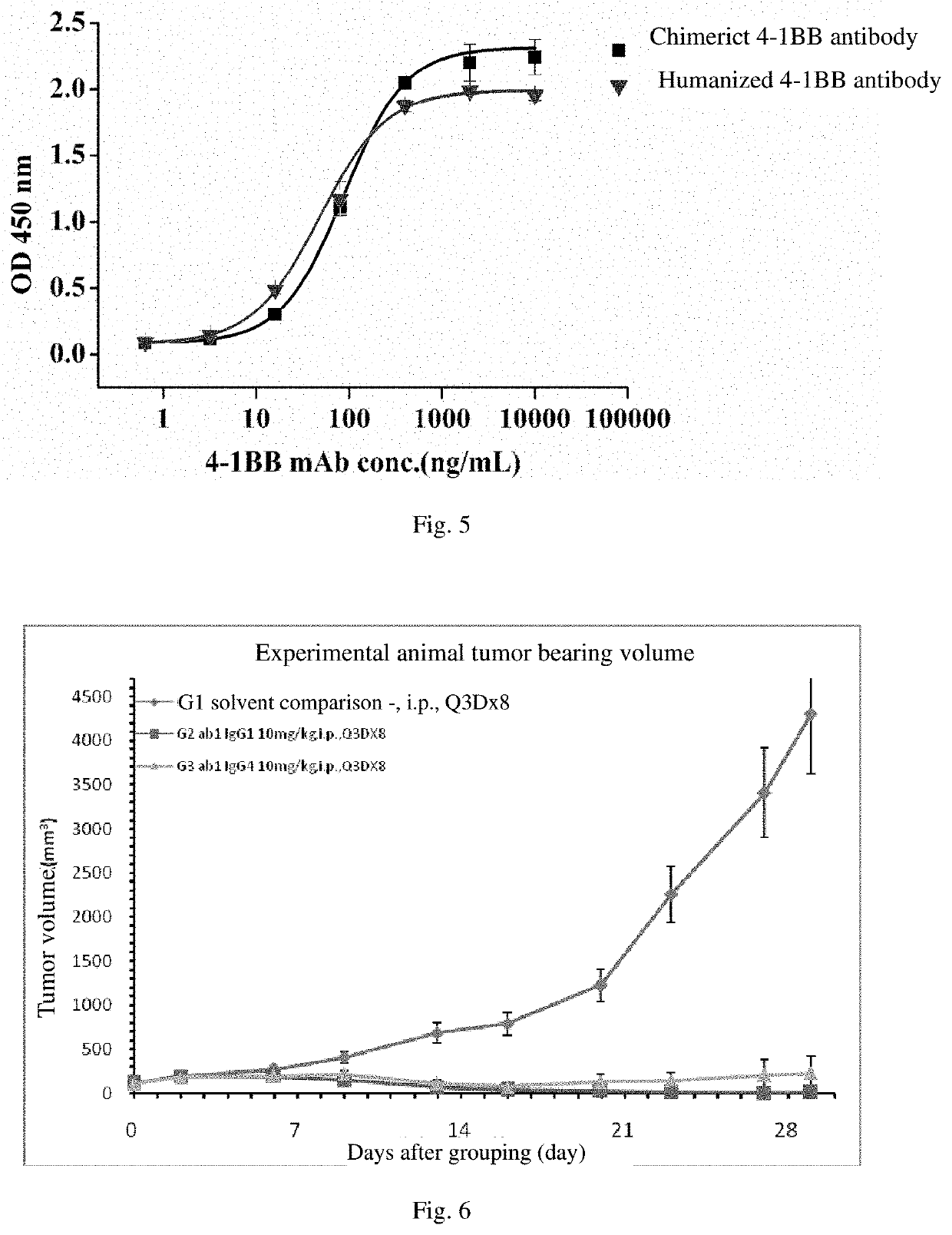Agonistic 4-1bb monoclonal antibody
a monoclonal antibody and agonistic technology, applied in the field of antibodies, can solve the problem of reducing the host's resistance to graft rejection
- Summary
- Abstract
- Description
- Claims
- Application Information
AI Technical Summary
Benefits of technology
Problems solved by technology
Method used
Image
Examples
embodiment 1
of Hybridoma
[0074]The variable regions of the heavy and light chains of the antibody of the invention are initially obtained from hybridoma cells. The hybridoma cells are prepared by repeatedly immunizing Balb / c mice 3 times with human 4-1BB-Fc fusion proteins and an equal amount of IFA and performing cell fusion on spleen cells of immunized mice having an appropriate antibody titer and myeloma cells of mice according to a conventional way.
[0075]Screening of Hybridoma Supernatant
[0076]ELISA screening of hybridoma cells that bind to human 4-1BB: in order to screen anti-h4-1BB positive hybridoma cells, diluting h4-1BB-Fc fusion proteins to 0.5 μg / mL in a PBS buffer solution, coating 100 μL / well with an ELISA plate and staying overnight at 4 DEG C.; then discarding the solution, washing three times with PBST, then blocking with 3% BSA-PBST at 37 DEG C. for 1 h; discarding the solution, washing three times with a PBST washing plate and then adding 100 μL hybridoma supernatant for incuba...
embodiment 2
of Anti-h4-1BB Chimeric Antibody
[0081]Preparation of antibody cDNA: the total RNAs of the hybridoma cells prepared in the embodiment 1 are extracted by using a guanidinium isothiocyanate-phenol-chloroform method, and with the RNA as a template, the first chain of the cDNA is synthesized by using a cDNA synthetic kit.
[0082]Gene cloning and sequence analysis of variable regions of the antibody: performing PCR amplification on VH and VL sequences of the antibody by adopting a documented universal primer and regarding the first chain of the cDNA as a template; connecting the VH and VL respectively to a T vector and transforming Escherichia coli; and sequencing after positive bacteria are authenticated through colony PCR, and confirming genes of the light and heavy chains of the antibody in the sequencing result by using IMGT / QUEST and IgBlast analysis software.
[0083]Construction of the eukaryotic expression vector of the chimeric antibody: splicing the sequence of the V region of the he...
embodiment 3
on of In Vitro Activity of Antibodies
[0085]Affinity of the antibody: determining binding kinetics of the purified antibody which is prepared in the embodiment 2 and the h4-1BB by using BIAcore T200; coupling 1 mg / mL antigen (h4-1BB-Fc fusion protein) to the surface of a CMS chip by using an amino coupling method, binding at 30 μL / min for 300 s when the concentration of the antibody is within 0.3125-5.0 μg / mL and then dissociating for 300 s; and analyzing data recorded by the Biacore T200 by using Biacore T200 Evaluation Software, wherein analysis results are as shown in Table 1.
TABLE 1Antibody cloneNo.ka (M−1S−1)kd (S−1)KD (M)Ab11.46 × 1051.37 × 10−59.34 × 10−11
[0086]Activation characteristics of antibodies: the activation of human PBMC by the purified antibody prepared in the embodiment 2 is determined in vitro experiment. First, blood is collected by using an anticoagulated blood collection tube, and the mixture of blood and anticoagulant in the blood collection tube is added to a...
PUM
| Property | Measurement | Unit |
|---|---|---|
| concentration | aaaaa | aaaaa |
| concentration | aaaaa | aaaaa |
| concentration | aaaaa | aaaaa |
Abstract
Description
Claims
Application Information
 Login to View More
Login to View More - R&D
- Intellectual Property
- Life Sciences
- Materials
- Tech Scout
- Unparalleled Data Quality
- Higher Quality Content
- 60% Fewer Hallucinations
Browse by: Latest US Patents, China's latest patents, Technical Efficacy Thesaurus, Application Domain, Technology Topic, Popular Technical Reports.
© 2025 PatSnap. All rights reserved.Legal|Privacy policy|Modern Slavery Act Transparency Statement|Sitemap|About US| Contact US: help@patsnap.com



